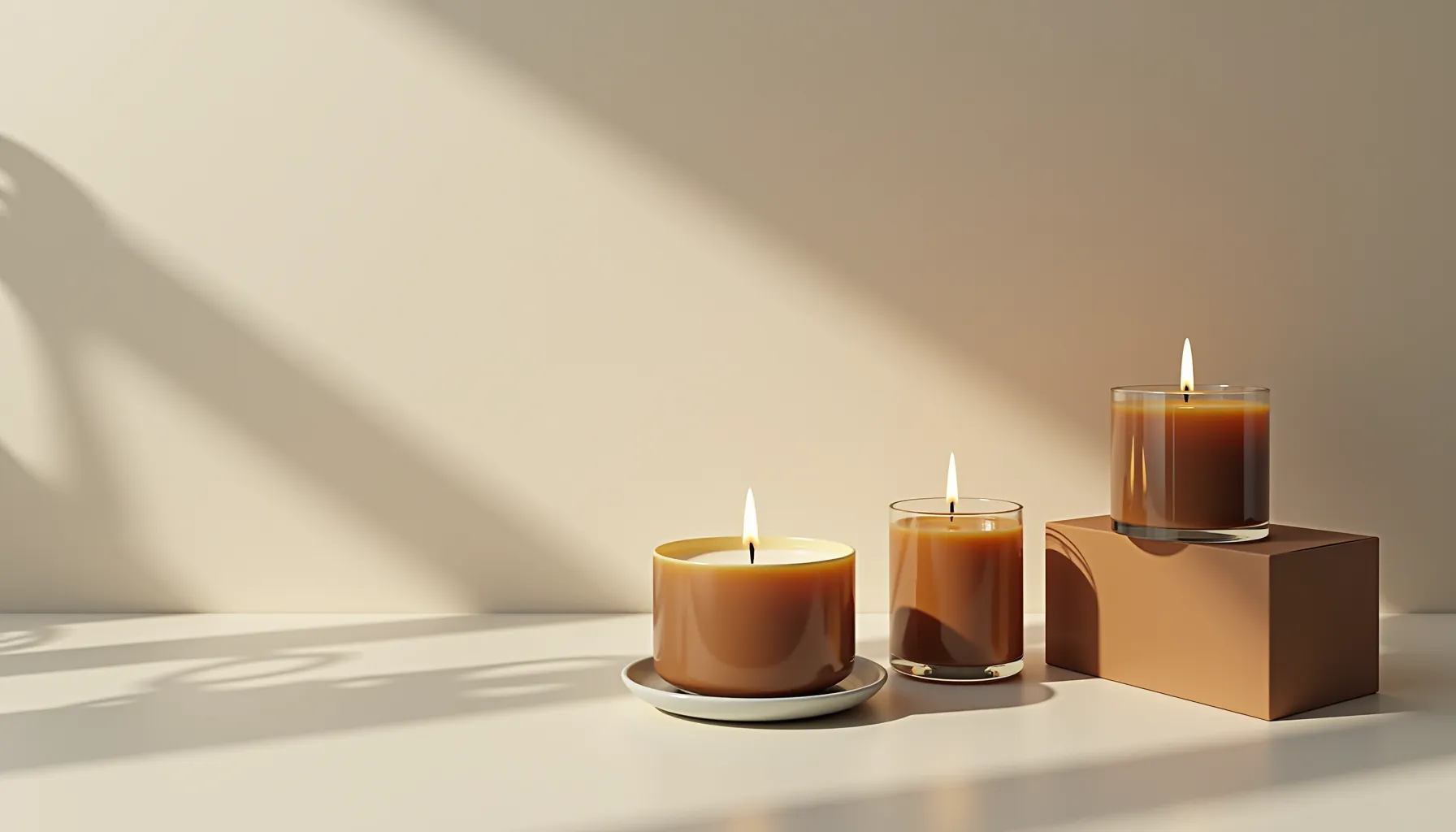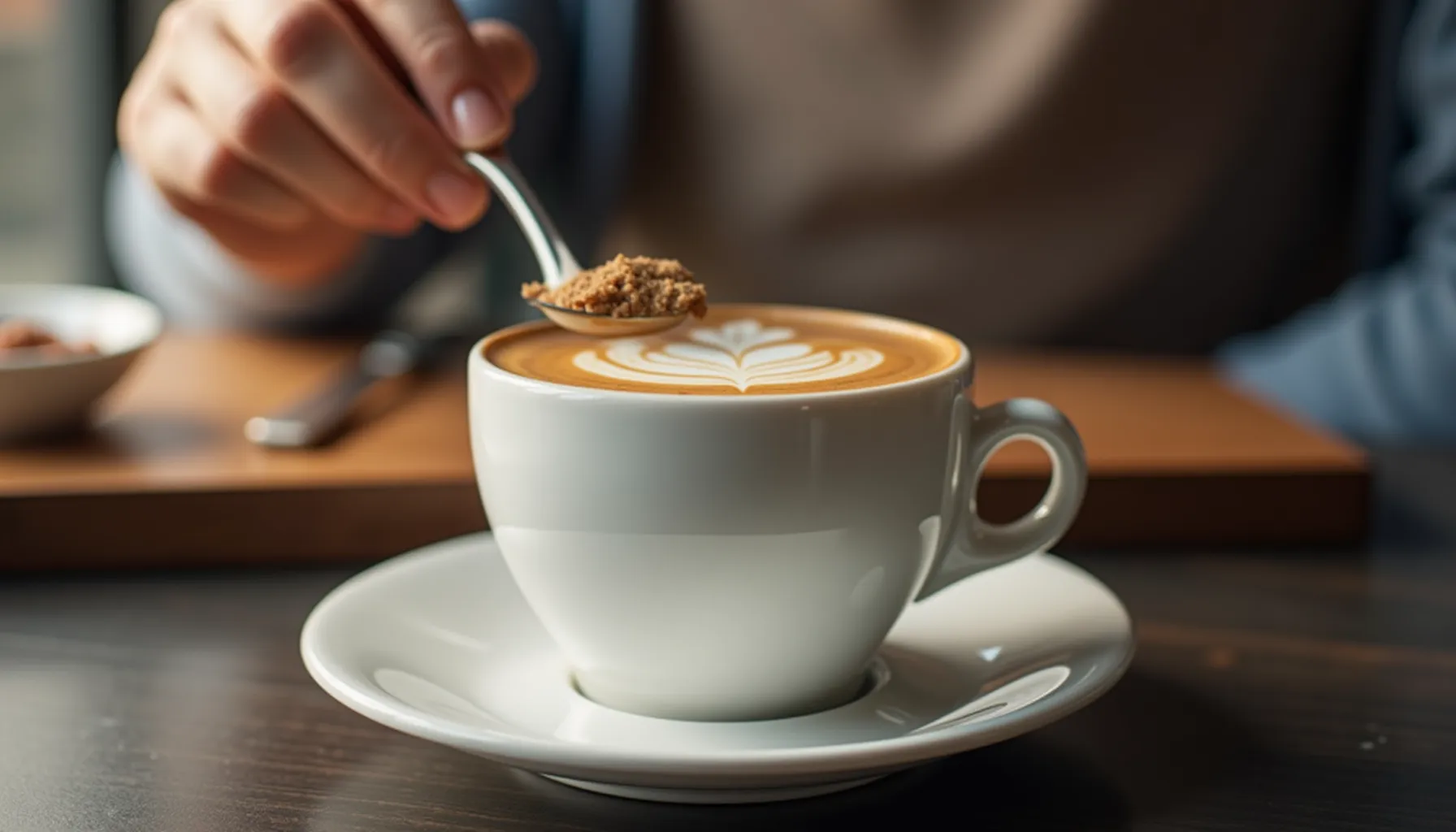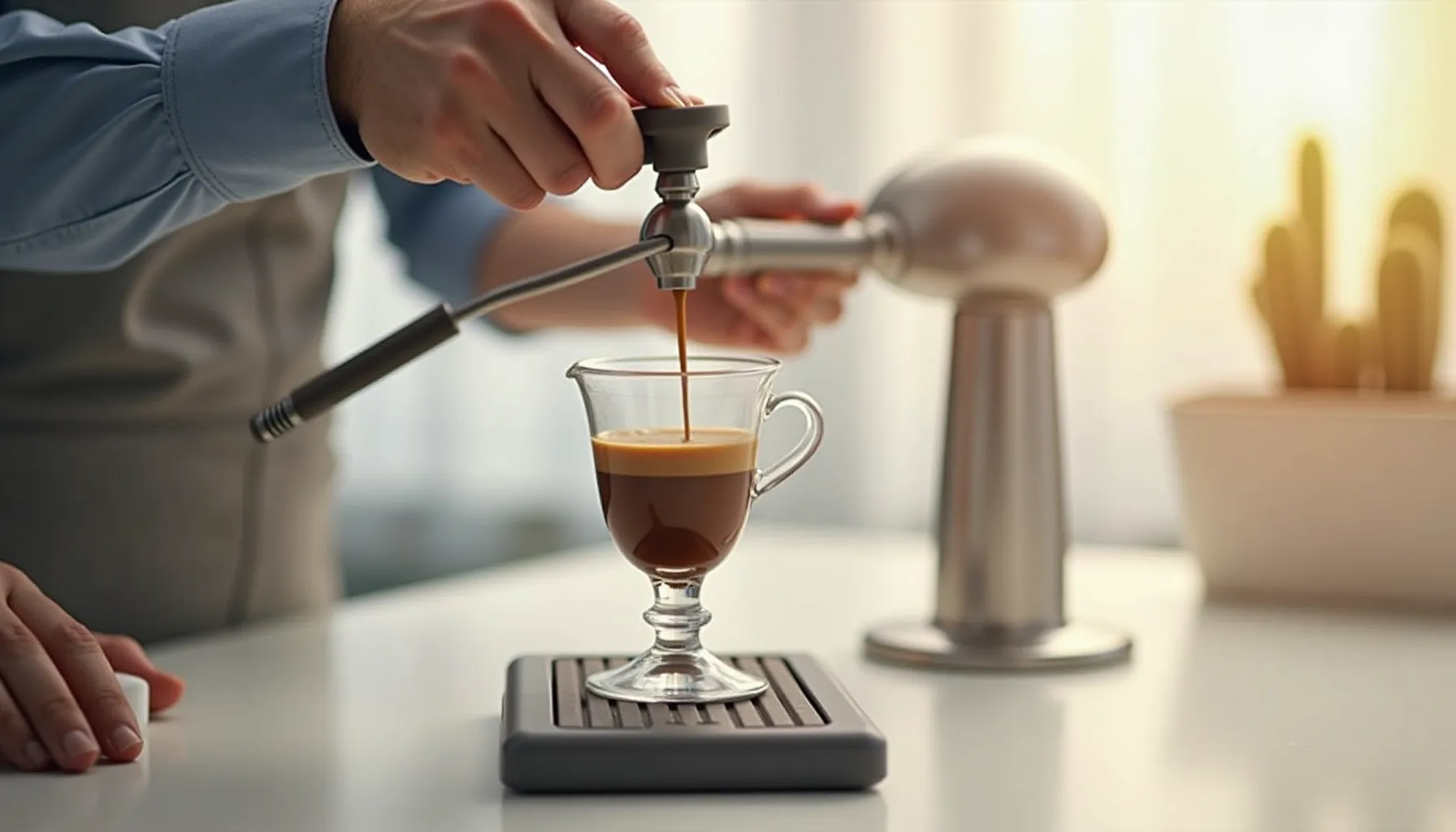If you’ve ever asked yourself, “how long do coffee beans last?” you’re not alone. Many of us have experienced that moment of shock when we realize our beloved beans have been sitting in the cupboard longer than we intended. Fresh coffee can transform your mornings, but understanding the lifespan of your coffee beans can make a world of difference in how you brew. Nobody wants a stale cup to ruin their day!
In this article, we’ll explore the varying lifespans of different coffee types, from green beans to ground varieties. You’ll learn about the factors that impact coffee freshness, the best storage practices to prolong their life, and how to spot stale beans before your coffee ritual goes awry. Plus, we’ll share some creative uses for those old beans that might still hold potential. Whether you’re a casual drinker or a brewing novice, this guide is here to help you get the most out of every cup.
Key Takeaways
- Understanding the lifespan of different coffee bean types.
- Identifying the factors affecting coffee freshness.
- Best practices for storing coffee beans.
- How to identify stale coffee beans.
- Creative uses for stale coffee beans.
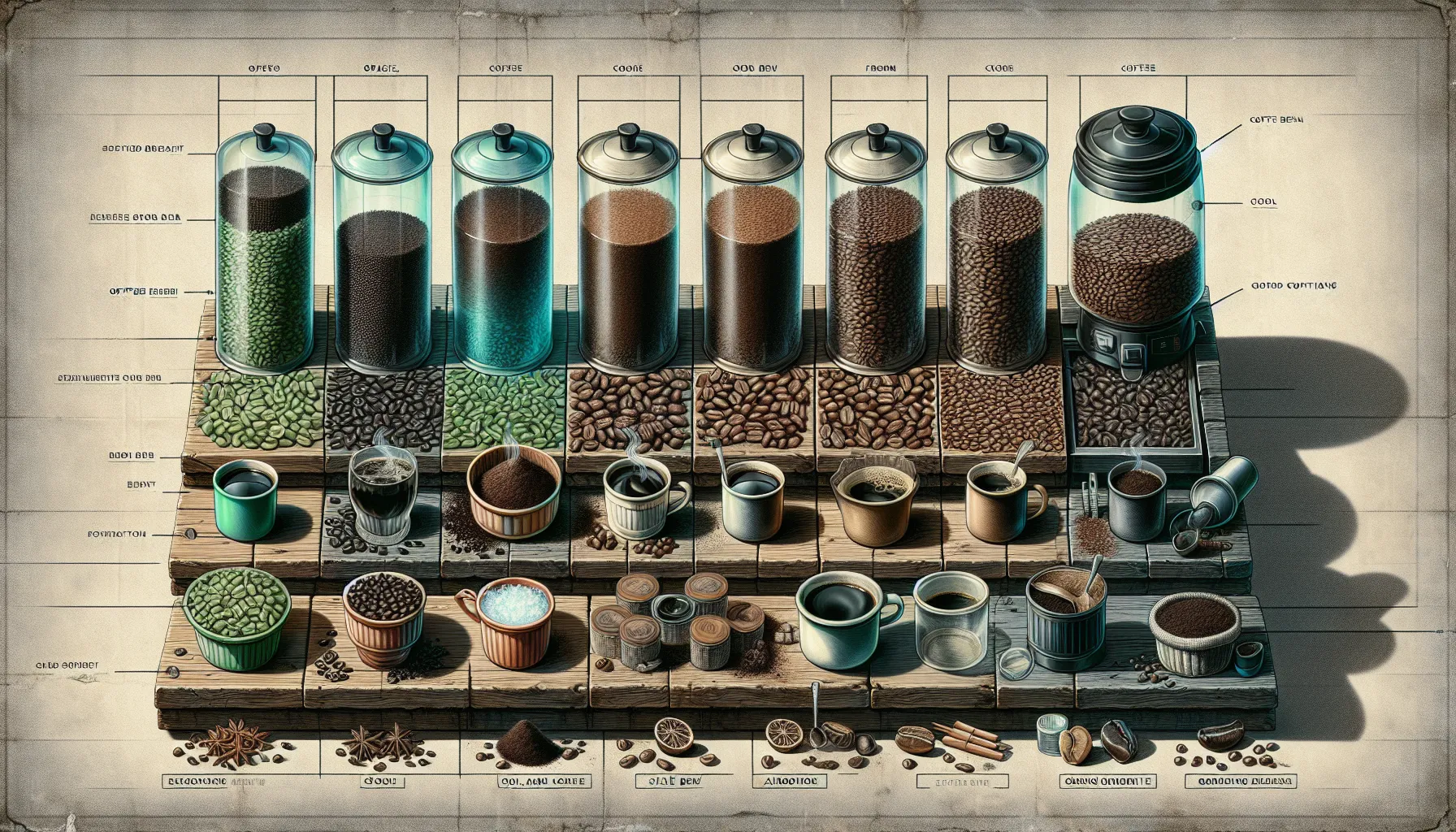
Understanding Coffee Bean Types and Their Lifespan
Green Coffee Beans
Green coffee beans are the raw, unroasted seeds that can last remarkably long. If stored correctly, these beans can maintain their quality for up to two years or more. The long lifespan is largely due to their unprocessed nature, which makes them resistant to spoiling compared to their roasted counterparts.
To keep green coffee beans fresh, store them in a cool, dry place away from direct sunlight. An airtight container is essential to protect them from moisture and humidity, both of which can ruin their flavor and quality. If you're someone who enjoys the art of roasting, investing in good green beans can pay off, offering promising flavors unlocked with skillful roasting.
Roasted Coffee Beans
Once green beans have been roasted, they enter a whole new realm of flavor and freshness. However, roasted coffee beans typically have a shorter shelf life, lasting about one to two weeks after being opened and maintaining quality for up to six months if left unopened. The roast date is crucial; beans are at their best just days after being roasted, gradually losing their optimal flavors with time.
When choosing roasted coffee, check the roast date on the package. Fresh beans are crucial for a great cup of coffee, so consider buying smaller batches to enjoy them at their peak. Store opened bags in airtight containers and keep them in a cool, dark place to ensure they maintain their delicious characteristics for as long as possible.
Ground Coffee
Now, let’s talk about ground coffee. While convenient, it's the least forgiving of all coffee types when it comes to freshness. Once ground, coffee can lose its flavor and aroma in as little as one to two weeks. The reason is simple—more surface area exposes the grounds to oxygen, which leads to quick degradation.
To maximize the flavor of your ground coffee, buy it freshly ground if possible, or invest in a good coffee grinder. Once opened, keep ground coffee in an airtight container and try to limit exposure to air. It's also a good idea to portion out what you need ahead of time to ensure you’re not forced to use stale coffee in your brews.
Factors That Affect Coffee Freshness
Environmental Factors
Several environmental factors can dramatically affect the longevity and freshness of your coffee beans. One of the largest contributors is air exposure. When coffee is exposed to oxygen, it begins to oxidize, leading to diminished flavor and aroma.
Another factor to consider is light. UV rays can degrade the quality of your coffee, so it’s best to keep your beans in opaque containers that prevent light from infiltrating. Additionally, moisture poses a significant threat; it can lead to mold or spoilage. Always store your coffee in a dry environment to prevent any moisture-related issues.
Roast Level Variation
Not all coffee is created equal, particularly when it comes to the roast level. Lighter roasts tend to retain their freshness longer compared to darker roasts. This is due to the chemical reactions that occur during the roasting process, which can impact flavor retention over time.
Understanding the roast profile of your coffee can inform not only how you store it but also how you enjoy it. Lighter roasts often have a fruity or floral note and may age better, while dark roasts deliver a robust flavor but may deteriorate faster. Make it a habit to think about the roast level when selecting your coffee and how those flavors might evolve after roasting.
Best Practices for Storing Coffee Beans
Ideal Storage Solutions
Storing coffee beans properly is essential for preserving their freshness. The most effective storage solutions are airtight containers, which can be made from glass or ceramic. These materials help limit air exposure and prevent odors from mingling with your coffee.
Opt for opaque containers, as they shield your beans from harmful light. Vacuum-sealed bags and containers equipped with valves can also provide excellent options for keeping your beans fresh. By following these simple storage practices, you can ensure that your morning brew remains as exciting as ever.
Recommended Storage Locations
Location is equally important when it comes to coffee storage. Aim to stash your beans in a cool, dark space, such as a pantry or cupboard. Avoid keeping them near heat sources, like the stove or in direct sunlight, which can hasten flavor loss.
Ultimately, a little forethought about where you store your coffee beans can play a significant role in how much you enjoy them. So, think of your pantry as a sanctuary for your coffee, ensuring it remains protected from environmental stressors!
Freezing Coffee Beans
Considering freezing coffee beans? It can be a viable option for extending their shelf life! When done correctly, freezing can keep your beans fresh for months. However, there are a few rules to follow. First, use an airtight container or vacuum-sealed bag to prevent moisture from ruining the beans.
It’s best to freeze beans in small portions so you only thaw what you plan to use over a week or two. Remember, after beans are taken out of the freezer, allow them to come to room temperature before making your coffee to avoid condensation. With these techniques, freezing coffee beans can keep your brews tasting fresh far longer.
How to Identify Stale Coffee Beans
Sensory Indicators
When you rely on fresh coffee to kickstart your day, it’s essential to know how to identify when your beans have gone stale. One of the most telling sensory indicators is the aroma. Freshly roasted beans should have a vibrant, rich scent that tantalizes your senses. If your beans bear a faint or flat odor, that’s a strong sign they’ve lost their freshness.
Another visual cue is the appearance of the beans themselves. Fresh coffee beans typically have a slight sheen from their natural oils. If they look overly dry or faded, it might be time to retire them. Pay attention to the color: beans that have turned ashy or pale are likely past their prime, impacting the quality of your brew.
Taste Test
Ultimately, the best measure of freshness comes from tasting your coffee. When brewed, fresh coffee should offer a balanced flavor profile with distinct notes that delight your palate. If you notice a flat or sour taste, or if the coffee feels more bitter than usual, then you’re likely dealing with stale beans.
Conducting a quick taste test can help you avoid brewing disappointment. Remember, investing in high-quality beans isn’t just about the initial purchase; it’s about enjoying that perfect cup each time you brew.
Creative Uses for Stale Coffee Beans
Culinary Ideas
Even if your coffee beans have lost their freshness, they can still serve a purpose beyond the cup! For instance, consider making cold brew. The slow extraction process can soften any staleness, allowing you to enjoy a refreshing iced coffee. Simply use stale grounds in a longer brewing process with cold water, and you may be surprised at how well they work!
Baking enthusiasts can also put stale coffee beans to good use. Try incorporating them into recipes for coffee-infused desserts, such as brownies or cakes. The flavors can meld beautifully, adding depth to your baked goods while minimizing waste.
Non-Culinary Uses
Stale coffee grounds are versatile and can even enhance your home life. If you’re into DIY projects, consider using old coffee grounds as a natural exfoliant in scrubs or face masks. They offer gentle exfoliation and a pleasant aroma, leaving your skin feeling refreshed.
Additionally, used coffee grounds can be a gardener’s ally! They add valuable nitrogen to your compost, promoting plant growth. Sprinkling them in your garden can even help deter pests, providing a win-win situation for both your plants and your kitchen waste.
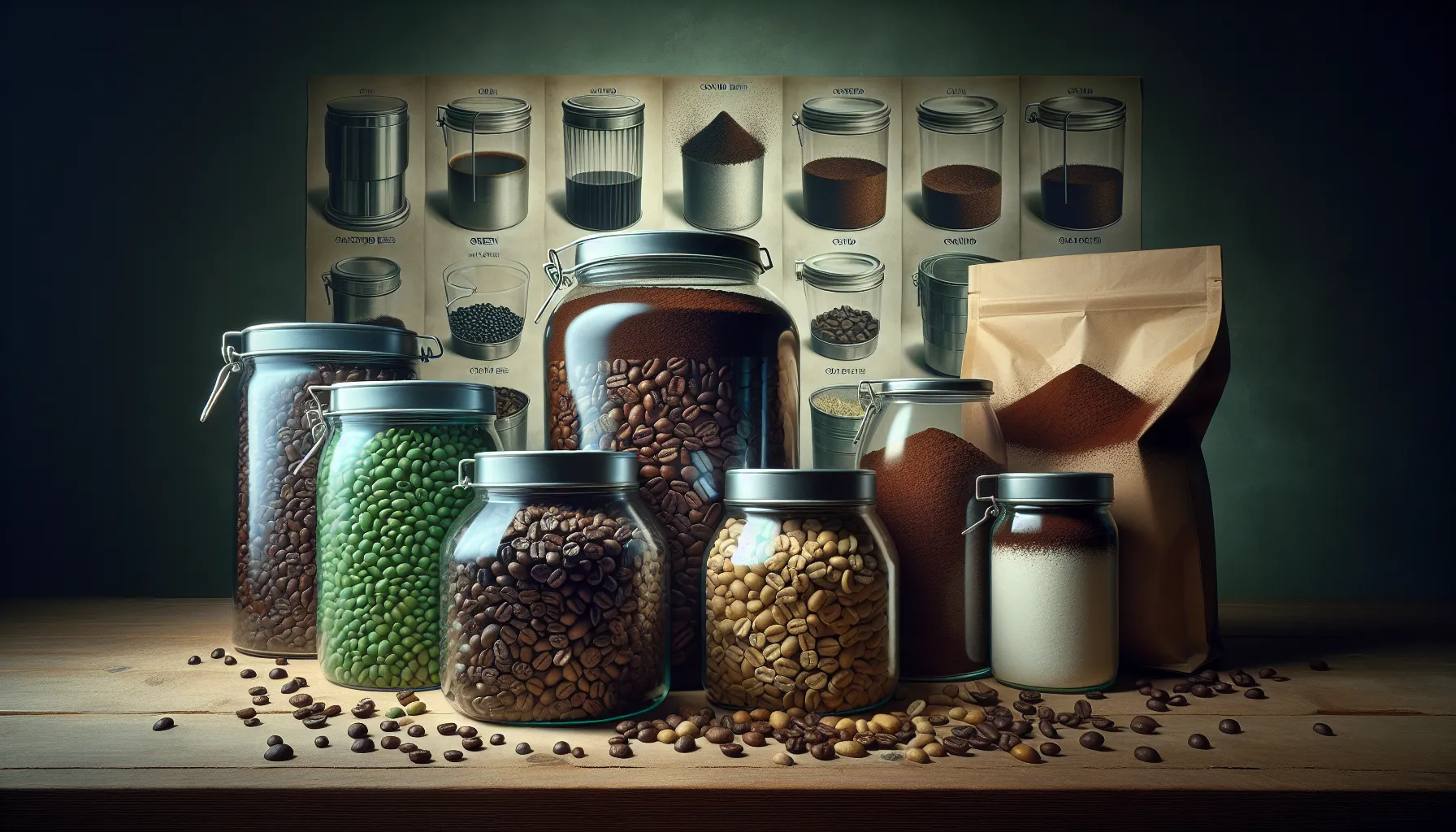
Brewing Insights for Your Coffee Journey
Understanding the longevity of coffee beans is essential for enhancing your daily brewing experience. From recognizing the differences between green, roasted, and ground beans to mastering the art of storage, these insights empower you to enjoy every cup at its freshest. Remember, coffee is more than just a morning ritual; it’s an experience that starts long before you hit the brew button.
As we uncovered, employing best practices for storage and being mindful of the signs of staleness can greatly influence the quality of your coffee. Engaging with stale beans creatively can also reduce waste and open up new culinary opportunities. By applying the strategies discussed in this article, you can transform your coffee routine into a delightful experience, full of vibrant flavors and enticing aromas.
So, the next time you find yourself with a bag of beans, take a moment to consider their journey from the farm to your cup. Embrace the knowledge you’ve gained and make thoughtful choices—your taste buds will thank you!
Frequently Asked Questions
How long do coffee beans last after opening?
Once opened, roasted coffee beans typically stay fresh for about one to two weeks. It's recommended to consume them within this timeframe to enjoy optimal flavor.
What are the best storage methods for coffee beans?
For maximum freshness, store coffee beans in airtight containers placed in a cool, dark spot. Avoid locations near heat sources or direct sunlight to preserve flavor.
Can I freeze coffee beans for long-term storage?
Yes, freezing can effectively extend the shelf life of your coffee beans. Just make sure to use airtight containers and thaw only what you need to prevent moisture exposure.
How can I tell if my coffee beans are stale?
Stale coffee beans typically exhibit a flat or diminished aroma, a dry appearance, and may taste bitter or sour when brewed. Fresh beans should have a vibrant smell and a balanced flavor profile.
What creative uses do stale coffee beans have?
Stale coffee beans can still be used for cold brew or incorporated into baked goods like brownies. Additionally, coffee grounds can serve as natural exfoliants or compost additives in gardening.





